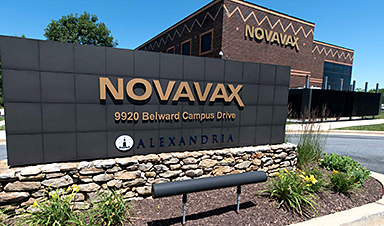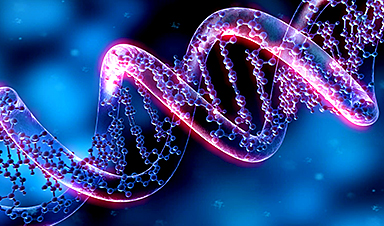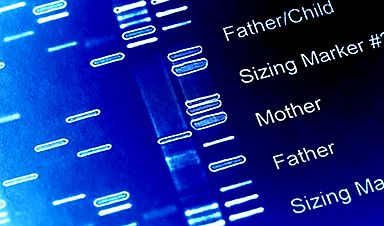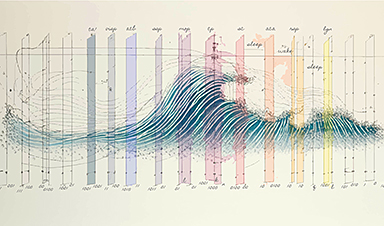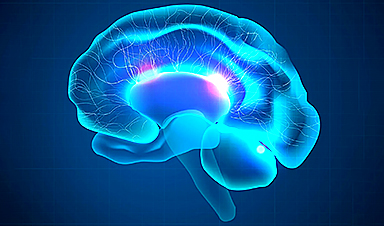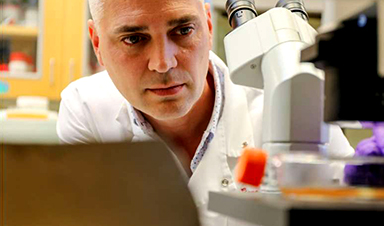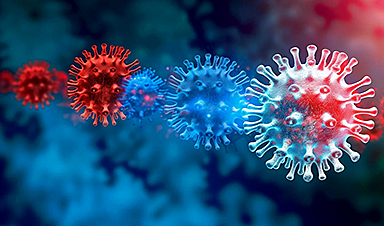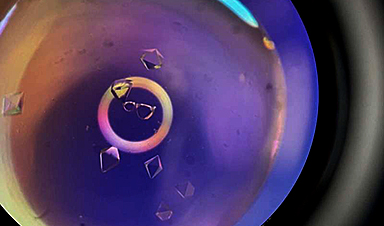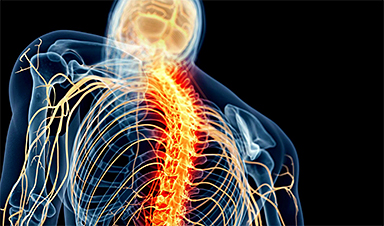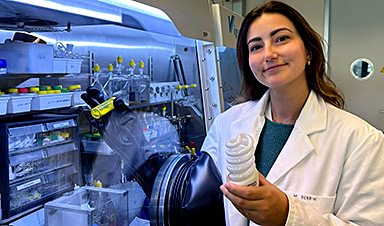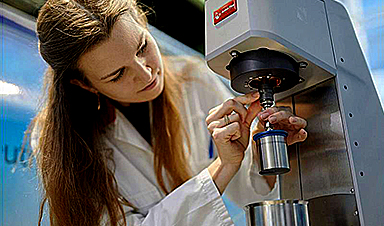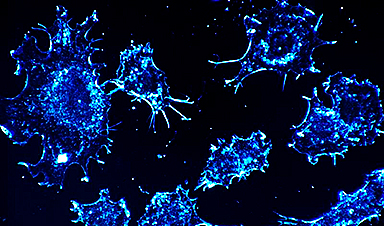A new Covid-19 vaccine soon to be approved in Australia appears to be even better than all others on offer, with new data showing it could prevent all deaths from the virus.
Trial data from the UK shows the Novavax jab stops 96 per cent of infections and 100 per cent of serious illness and death from the original version of coronavirus.
Australia has ordered 51 million doses of the jab, but it has not yet been approved by regulators.
The vaccine was also about 86 per cent effective in stopping the more contagious UK strain of Covid-19, which has caused havoc in several Australian hotel quarantine systems.
It was about 90 per cent effective overall, combining data from people infected with both versions of the coronavirus.
In a smaller trial conducted in South Africa – where volunteers were primarily exposed to another newer, more contagious variant widely circulating there and spreading around the world – the Novavax vaccine was only around 55 per cent effective at stopping infection but still fully prevented severe illness and death.
Results from the final analysis of the UK trial were largely in line with interim data released in January.
Australia is currently rolling out the Pfizer and AstraZeneca jabs, which are both very effective at stopping serious illness.
People who have received a vaccine can be given another type of jab later if it proves to be a more effective combination.
It comes after Health Department boss Brendan Murphy confirmed all Australians will not get both jabs by October.
But Professor Murphy said a solitary shot of AstraZeneca’s Covid-19 jab – rather than two – will be enough to ‘completely vaccinate’ the population by then.
Speaking on Thursday, Professor Murphy admitted the target of four million vaccinations by next month also won’t be achieved.
He said ‘global supply issues’ with a number of European countries – including Italy blocking the export of a shipment of 250,000 doses to Australia – was the reason for the delay.
Australia had been expecting 3.8 million doses of AstraZeneca vaccine from Europe in March, but so far only 700,000 doses have arrived – leaving a 3.1 million shortfall.
The vaccine was also about 86 per cent effective in stopping the more contagious UK strain of Covid-19, which has caused havoc in several Australian hotel quarantine systems.
It was about 90 per cent effective overall, combining data from people infected with both versions of the coronavirus.
In a smaller trial conducted in South Africa – where volunteers were primarily exposed to another newer, more contagious variant widely circulating there and spreading around the world – the Novavax vaccine was only around 55 per cent effective at stopping infection but still fully prevented severe illness and death.
Results from the final analysis of the UK trial were largely in line with interim data released in January.
Australia is currently rolling out the Pfizer and AstraZeneca jabs, which are both very effective at stopping serious illness.
People who have received a vaccine can be given another type of jab later if it proves to be a more effective combination.
It comes after Health Department boss Brendan Murphy confirmed all Australians will not get both jabs by October.
But Professor Murphy said a solitary shot of AstraZeneca’s Covid-19 jab – rather than two – will be enough to ‘completely vaccinate’ the population by then.
Speaking on Thursday, Professor Murphy admitted the target of four million vaccinations by next month also won’t be achieved.
He said ‘global supply issues’ with a number of European countries – including Italy blocking the export of a shipment of 250,000 doses to Australia – was the reason for the delay.
Australia had been expecting 3.8 million doses of AstraZeneca vaccine from Europe in March, but so far only 700,000 doses have arrived – leaving a 3.1 million shortfall.
Image Credit: Novavax
Post by Amanda Scott, NA CEO. Follow her on twitter @tantriclens
Thanks to Heinz V. Hoenen. Follow him on twitter: @HeinzVHoenen
News
The Silent Battle Within: How Your Organs Choose Between Mom and Dad’s Genes
Research reveals that selective expression of maternal or paternal X chromosomes varies by organ, driven by cellular competition. A new study published today (July 26) in Nature Genetics by the Lymphoid Development Group at the MRC [...]
Study identifies genes increasing risk of severe COVID-19
Whether or not a person becomes seriously ill with COVID-19 depends, among other things, on genetic factors. With this in mind, researchers from the University Hospital Bonn (UKB) and the University of Bonn, in [...]
Small regions of the brain can take micro-naps while the rest of the brain is awake and vice versa
Sleep and wake: They're totally distinct states of being that define the boundaries of our daily lives. For years, scientists have measured the difference between these instinctual brain processes by observing brain waves, with [...]
Redefining Consciousness: Small Regions of the Brain Can Take Micro-Naps While the Rest of the Brain Is Awake
The study broadly reveals how fast brain waves, previously overlooked, establish fundamental patterns of sleep and wakefulness. Scientists have developed a new method to analyze sleep and wake states by detecting ultra-fast neuronal activity [...]
AI Reveals Health Secrets Through Facial Temperature Mapping
Researchers have found that different facial temperatures correlate with chronic illnesses like diabetes and high blood pressure, and these can be detected using AI with thermal cameras. They highlight the potential of this technology [...]
Breakthrough in aging research: Blocking IL-11 extends lifespan and improves health in mice
In a recent study published in the journal Nature, a team of researchers used murine models and various pharmacological and genetic approaches to examine whether pro-inflammatory signaling involving interleukin (IL)-11, which activates signaling molecules such [...]
Promise for a universal influenza vaccine: Scientists validate theory using 1918 flu virus
New research led by Oregon Health & Science University reveals a promising approach to developing a universal influenza vaccine—a so-called "one and done" vaccine that confers lifetime immunity against an evolving virus. The study, [...]
New Projects Aim To Pioneer the Future of Neuroscience
One study will investigate the alterations in brain activity at the cellular level caused by psilocybin, the psychoactive substance found in “magic mushrooms.” How do neurons respond to the effects of magic mushrooms? What [...]
Decoding the Decline: Scientific Insights Into Long COVID’s Retreat
Research indicates a significant reduction in long COVID risk, largely due to vaccination and the virus’s evolution. The study analyzes data from over 441,000 veterans, showing lower rates of long COVID among vaccinated individuals compared [...]
Silicon Transformed: A Breakthrough in Laser Nanofabrication
A new method enables precise nanofabrication inside silicon using spatial light modulation and laser pulses, creating advanced nanostructures for potential use in electronics and photonics. Silicon, the cornerstone of modern electronics, photovoltaics, and photonics, [...]
Caught in the actinium: New research could help design better cancer treatments
The element actinium was first discovered at the turn of the 20th century, but even now, nearly 125 years later, researchers still don't have a good grasp on the metal's chemistry. That's because actinium [...]
Innovative Light-Controlled Drugs Could Revolutionize Neuropathic Pain Treatment
A team of researchers from the Institute for Bioengineering of Catalonia (IBEC) has developed light-activated derivatives of the anti-epileptic drug carbamazepine to treat neuropathic pain. Light can be harnessed to target drugs to specific [...]
Green Gold: Turning E-Waste Into a Treasure Trove of Rare Earth Metals
Scientists are developing a process inspired by nature that efficiently recovers europium from old fluorescent lamps. The approach could lead to the long-awaited recycling of rare earth metals. A small molecule that naturally serves [...]
Cambridge Study: AI Chatbots Have an “Empathy Gap,” and It Could Be Dangerous
A new study suggests a framework for “Child Safe AI” in response to recent incidents showing that many children perceive chatbots as quasi-human and reliable. A study has indicated that AI chatbots often exhibit [...]
Nanoparticle-based delivery system could offer treatment for diabetics with rare insulin allergy
Up to 3% of people with diabetes have an allergic reaction to insulin. A team at Forschungszentrum Jülich has now studied a method that could be used to deliver the active substance into the [...]
Nanorobot kills cancer cells in mice with hidden weapon
Researchers at Karolinska Institutet in Sweden have developed nanorobots that kill cancer cells in mice. The robot's weapon is hidden in a nanostructure and is exposed only in the tumor microenvironment, sparing healthy cells. [...]
